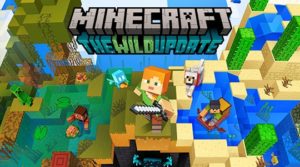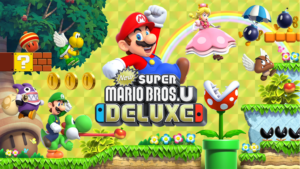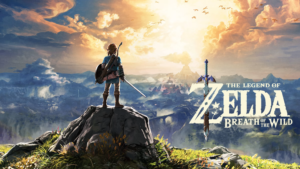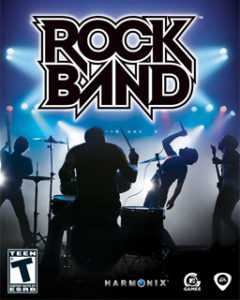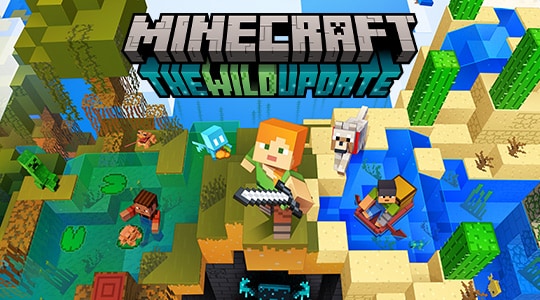
How Games Can Boost Your Learning
Did you know that playing games can make you smarter, happier, and more creative?
In this article, we will explore how games can enhance your learning and pedagogical skills in various ways. Games are not only fun and entertaining, but also powerful tools for stimulating your brain, enhancing your memory, improving your problem-solving skills, fostering your creativity, and motivating you to achieve your goals. We will also discuss some of the challenges and opportunities of using games for learning and pedagogy in different contexts and settings. Whether you are a student, a teacher, a parent, or a lifelong learner, you will find some useful tips and insights on how to use games to boost your learning and creativity.
In Keith Bowen’s Stanford class EDU 391 (Engineering Education and Online Learning), I recently spoke about Heather Browning’s excellent book chapter where she discusses her MDAO Framework for designing serious games, which is seminar to our work on Game Design Thinking.
But she also surfaces work by Gentile and Gentile (2008) who suggested a list of seven “exemplary dimensions of video games”. At the time, they were looking at violent video games as a response to much of the previous literature around whether video games were harmful for children. But in the interim researchers have discovered that in fact video games have many positive and prosocial qualities for children and young adults.
In this article, we will explore some of the reasons why games are good pedagogical tools, based on these points:
Active and Participatory Learning
One of the main advantages of games as pedagogical tools is that they require players to be active and participatory in their learning process. Unlike passive forms of instruction, such as lectures or readings, games involve players in making decisions, solving problems, collaborating with others, and creating outcomes. These activities engage players cognitively, emotionally, socially, and physically, stimulating multiple senses and modes of learning.
By being active and participatory, players also take ownership over their actions and choices. They are not simply following instructions or rules, but rather exploring possibilities and consequences. This ownership fosters a sense of agency and autonomy, which are key factors for intrinsic motivation and self-determination.
One example of a video game that involves active and participatory learning is Minecraft, a sandbox game that allows players to create and explore virtual worlds made of blocks. Minecraft can be used to teach various subjects and skills, such as math, science, art, history, and programming.
In Minecraft, players are active and participatory in their learning process because they have to make decisions, solve problems, collaborate with others, and create outcomes. For example, players can design and build structures, such as houses, castles, bridges, or monuments, using different types of blocks and materials. They can also experiment with physics, chemistry, electricity, and logic by creating circuits, machines, or contraptions using redstone, a material that can transmit power and signals. They can also explore different biomes, such as forests, deserts, oceans, or caves, and encounter various creatures, such as animals, monsters, or villagers.
By being active and participatory in Minecraft, players take ownership over their actions and choices. They can see the impact of their decisions on the game world and their own progress. They can also compare their results with those of other players or with their own expectations. For example, players can share their creations online or in multiplayer servers, where they can receive feedback, praise, or criticism from other players. They can also set their own goals and challenges, such as surviving in a hostile environment, finding rare resources, or completing quests.
Ownership and Connection
When players take ownership over their actions in games, they also feel a greater sense of connection to their results. They can see the impact of their decisions on the game world, the characters, the story, and their own progress. They can also compare their results with those of other players or with their own expectations. This connection provides players with a sense of meaning and purpose for their learning.
Moreover, games can create emotional connections between players and the content they are learning. Games can elicit various emotions, such as curiosity, excitement, joy, frustration, anger, fear, or empathy. These emotions can enhance memory retention and recall, as well as influence attitudes and behaviors. For example, games that simulate real-world scenarios can help players empathize with different perspectives or situations.
One video game that involves ownership and connection is Animal Crossing, a life simulation game that allows players to create and customize their own characters, homes, and islands. Animal Crossing can be used to teach various subjects and skills, such as art, design, economics, and social studies.
In Animal Crossing, players have ownership and connection over their actions and choices. They can see the impact of their decisions on the game world and their own progress. They can also compare their results with those of other players or with their own expectations. For example, players can design and decorate their homes, gardens, or shops, using different types of furniture, clothing, or items. They can also trade or sell items with other players or with in-game characters, using a currency called Bells. They can also explore different seasons, events, or activities, such as fishing, gardening, or celebrating holidays.
By having ownership and connection in Animal Crossing, players also feel a greater sense of meaning and purpose for their learning. They can express their creativity, personality, and preferences through their creations. They can also learn about different cultures, customs, or lifestyles by interacting with other players or with in-game characters. They can also develop social and emotional skills, such as communication, cooperation, empathy, or responsibility.
Clear Objectives and Self-Efficacy
Another benefit of games as pedagogical tools is that they provide clear objectives that function as unequivocal markers of success. Games usually have explicit goals that players need to achieve in order to progress or win. These goals can be short-term or long-term, individual or collective, concrete or abstract. They can also be aligned with specific learning outcomes or competencies.
By having clear objectives, games help players monitor their performance and evaluate their progress. They also provide feedback on how well players are doing in relation to the objectives. This feedback can be positive or negative, immediate or delayed, verbal or non-verbal. It can also be adaptive or personalized to the player’s level of skill or knowledge.
Feedback is essential for enhancing self-efficacy, which is the belief in one’s ability to perform a task or achieve a goal. Self-efficacy influences motivation, effort, persistence, resilience, and achievement. Games can increase self-efficacy by providing players with opportunities to succeed at challenging tasks, by rewarding them for their achievements, by modeling successful strategies or behaviors, and by offering them support or guidance when needed.
One video game that involves clear objectives and self-efficacy is Super Mario Bros, a platform game that requires players to control the character Mario as he runs and jumps through various levels to rescue Princess Peach from the villain Bowser. Super Mario Bros can be used to teach various subjects and skills, such as math, physics, logic, and coordination.
In Super Mario Bros, players have clear objectives that function as unequivocal markers of success. They have to reach the end of each level within a time limit, avoiding or defeating enemies and obstacles along the way. They also have to collect coins, power-ups, and extra lives that can help them in their quest. They can also find hidden secrets, such as warp zones or bonus rooms, that can reward them with shortcuts or extra points.
By having clear objectives, Super Mario Bros helps players monitor their performance and evaluate their progress. It also provides feedback on how well players are doing in relation to the objectives. This feedback can be positive or negative, immediate or delayed, verbal or non-verbal. It can also be adaptive or personalized to the player’s level of skill or knowledge. For example, Super Mario Bros can show players how many coins, points, or lives they have, how much time they have left, how many levels they have completed, or how many times they have died.
Feedback is essential for enhancing self-efficacy, which is the belief in one’s ability to perform a task or achieve a goal. Self-efficacy influences motivation, effort, persistence, resilience, and achievement. Super Mario Bros can increase self-efficacy by providing players with opportunities to succeed at challenging tasks, by rewarding them for their achievements, by modeling successful strategies or behaviors, and by offering them support or guidance when needed.
Variable Difficulty Levels
Games can also adjust their difficulty levels according to the player’s performance. This feature allows games to match the player’s level of skill or knowledge, and to provide them with optimal challenges that are neither too easy nor too hard. This way, games can effectively eliminate boredom and frustration, which are responses to tasks with inappropriate difficulties and can interfere with continued participation.
By providing variable difficulty levels, games can also promote the concept of “zone of proximal development” (ZPD), which is the range of tasks that are slightly beyond the current level of competence but can be accomplished with some assistance. Games can act as scaffolds that support players within their ZPD, by providing hints, clues, tips, or other forms of help that enable them to overcome obstacles and reach higher levels of performance.
One video game that involves variable difficulty levels is The Legend Of Zelda: Breath Of The Wild, an open-world adventure game that requires players to control the character Link as he explores the vast land of Hyrule, solves puzzles, and fights enemies to defeat the evil Ganon. Breath Of The Wild can be used to teach various subjects and skills, such as geography, history, ecology, and critical thinking.
In Breath Of The Wild, players can choose from two difficulty levels at the start of the game: Normal or Master Mode. Master Mode is a DLC (downloadable content) Hard Mode that increases the rank, health, and intelligence of enemies, adds floating platforms with enemies and treasure, and makes enemies regenerate health in combat. Master Mode also adds a new rank of enemy, the Gold Rank, which is even tougher than the Silver Rank.
However, Breath Of The Wild also has a feature that adjusts its difficulty level according to the player’s performance. This feature is called adaptive difficulty or dynamic difficulty adjustment (DDA), and it works by monitoring various factors, such as the number of enemies defeated, the number of shrines completed, the number of divine beasts freed, and the time spent in the game. Based on these factors, the game can increase or decrease its difficulty by changing the spawn rate, type, and behavior of enemies, the amount and quality of items and weapons found in chests or dropped by enemies, and the weather and environmental hazards.
By providing variable difficulty levels, Breath Of The Wild can match the player’s level of skill or knowledge, and provide them with optimal challenges that are neither too easy nor too hard. This way, Breath Of The Wild can effectively eliminate boredom and frustration, which are responses to tasks with inappropriate difficulties and can interfere with continued participation.
Breath Of The Wild can act as a scaffold that supports players within their ZPD, by providing hints, clues, tips, or other forms of help that enable them to overcome obstacles and reach higher levels of performance.
Immediate Feedback and Practice
Games also provide immediate feedback to players as they practice skills, allowing them to continually advance their practice by instantly applying the knowledge gained. Practice is essential for learning, as it helps consolidate information in long-term memory, enhance recall and retrieval, and transfer skills to new contexts. Games can facilitate practice by providing repeated opportunities to apply skills in different situations, by varying the types and levels of difficulty of the tasks, by increasing the complexity and challenge of the tasks over time, and by providing feedback and reinforcement for correct or incorrect responses.
One video game that involves immediate feedback and practice is Rock Band, a rhythm game that requires players to press buttons on a different controllers which look like a bass or rhythm guitar, a drum set, or a microphone, in sync with musical notes that scroll on the screen. Rock Band can be used to teach various subjects and skills, such as music, coordination, memory, and concentration.
In Rock Band, players receive immediate feedback on their performance by hearing the sound of their instruments, seeing the score and the accuracy meter, and getting cheers or boos from the crowd. The feedback can be positive or negative, depending on how well the player matches the notes. The feedback can also be personalized to the player’s level of skill or knowledge, as the game can adjust the speed, number, and complexity of the notes according to the difficulty level chosen by the player.
By providing immediate feedback, Rock Band helps players monitor their performance and evaluate their progress. It also provides reinforcement or correction for their actions, which can enhance their motivation, confidence, and learning. Rock Band also facilitates practice by providing repeated opportunities to apply skills in different songs, genres, and modes. The game also encourages players to practice beyond the point of mastery and create automaticity, as they can unlock new songs, levels, or features by achieving high scores or completing challenges.
Over Learning and Automaticity
Games also encourage players to “over learn”, continuing their practice beyond the point of mastery and creating automaticity. Automaticity is the ability to perform a skill without conscious effort or attention, which frees up cognitive resources for other tasks or higher-order thinking. Games can foster automaticity by requiring players to perform skills under time pressure or distraction, by increasing the speed or accuracy of the responses, by combining multiple skills in a single task, and by providing rewards or incentives for optimal performance.
One video game that involves overlearning and automaticity is Dance Dance Revolution, a rhythm game that requires players to step on a dance pad in sync with musical arrows that scroll on the screen. Dance Dance Revolution can be used to teach various subjects and skills, such as music, coordination, memory, and fitness.
In Dance Dance Revolution, players practice skills beyond the point of mastery and create automaticity by repeating the same actions over and over again. Dance Dance Revolution can foster automaticity by requiring players to perform complex and fast-paced dance moves under time pressure or distraction, by increasing the speed or accuracy of the arrows, by combining multiple moves in a single song, and by providing rewards or incentives for optimal performance.
Flow State and Learning
Finally, games can induce a flow state in players, which is a psychological state of optimal experience characterized by intense focus, immersion, enjoyment, and motivation. Flow occurs when the challenge of a task matches the skill of the performer, and when there is clear feedback and a sense of control. Flow also promotes learning, by increasing self-efficacy and readiness to experiment with new ways of using learned skills, by enhancing creativity and problem-solving abilities, and by facilitating intrinsic motivation and interest.
One video game that involves flow state and learning is Tetris, a puzzle game that requires players to manipulate falling blocks of different shapes and colors to create horizontal lines without gaps. Tetris can be used to teach various subjects and skills, such as math, geometry, logic, and spatial reasoning.
Tetris can create these conditions of flow by providing players with clear goals, immediate feedback, variable difficulty levels, and minimal distractions.
By inducing a flow state, Tetris also promotes learning, by increasing self-efficacy and readiness to experiment with new ways of using learned skills, by enhancing creativity and problem-solving abilities, and by facilitating intrinsic motivation and interest. Tetris can also improve cognitive functions, such as attention, memory, perception, and mental rotation.
How To Design Using These Principles
An practitioner who is not making a game can still take advantage of the main points from this article by applying some of the principles and practices of game design to their learning products or experiences. For example, an edtech designer could:
- Provide clear objectives and feedback to learners, so that they know what they are expected to do and how well they are doing it. This could be done by using learning outcomes, rubrics, quizzes, badges, or progress bars.
- Provide variable difficulty levels to learners, so that they can choose or adjust the level of challenge that suits their skill and knowledge. This could be done by using adaptive algorithms, branching scenarios, scaffolding, or hints.
- Provide immediate feedback and practice to learners, so that they can learn from their mistakes and improve their performance. This could be done by using interactive simulations, animations, videos, or exercises.
- Provide overlearning and automaticity to learners, so that they can master and apply skills without conscious effort or attention. This could be done by using spaced repetition, retrieval practice, or interleaving.
- Provide flow state to learners, so that they can experience optimal engagement, enjoyment, and motivation. This could be done by using storytelling, personalization, choice, or collaboration.
Conclusion
As we have seen, games are not only fun and entertaining, but also powerful tools for learning and pedagogy. They can stimulate your brain, enhance your memory, improve your problem-solving skills, foster your creativity, and motivate you to achieve your goals.
However, using games for learning and pedagogy also requires careful planning, design, and evaluation to ensure that they are effective, engaging, and appropriate for the intended audience and context.
And we can use many of these principles for creating digital learning experiences that don’t involve games at all.
Afterword
I am indebted to Heather Browning’s seminar chapter on Guidelines for Designing Effective Games as Clinical Interventions: Mechanics, Dynamics, Aesthetics, and Outcomes (MDAO) Framework as it introduced me to the work of Gentile and Gentile and taught be so much about expanding the MDA Framework of game design.

